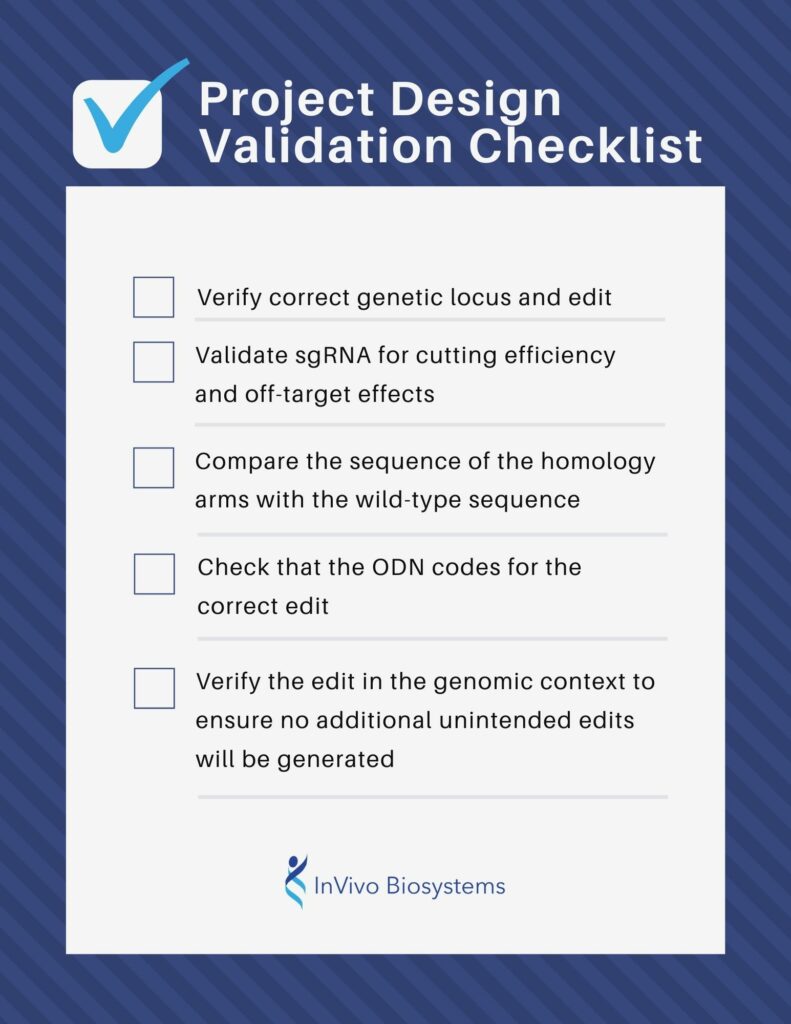The success of a point mutation, tag knock-in or precise deletion project using CRISPR technology relies on multiple factors ranging from good project design to quality of components used to methods used to identify the desired allele.
An error-proofed CRISPR project design ensures a predictable turn-around time, ordering the right components, and avoidance of unwanted outcomes such as delay of product delivery, project re-designs, cost, and waiting times for new parts.
As a CRISPR project designer myself, I like to believe that my work is foolproof, but mistakes can happen, various design issues can be overlooked, or maybe just a less than optimal design was used. To minimize such events, we at InVivo Biosystems have implemented a “Project Design Validation” process:
- Verify correct genetic locus and edit. Ensure the edit in the design is performed at the client’s desired locus and contains the specific type of genomic edit requested.
- Validate sgRNA for cutting efficiency and off-target effects. This is an imperative step to ensure the efficiency of the single guide RNAs (sgRNAs). A bad sgRNA may result in low efficiency of cutting the genome or off-target edits that are unwanted (figure 1).
- Compare the sequence of the homology arms with the wild-type sequence. The single-stranded donor template (ODN) must have homology arms that match the wild-type sequence for correct integration of the target edit. The arms start at the cut site for the sgRNAs and must have enough length for homology-directed repair (typically about 35bp).
- Check that the ODN codes for the correct edit. This step is key to generating the desired genomic modification (point-mutation (KI), deletion (KO) or other). This step also impacts future screening design and methods used for allelic discrimination.
- Verify the edit in the genomic context to ensure no additional unintended edits will be generated. In this step, the sequence is scanned again to verify that correct gene splicing and no frame errors have been introduced.
This validation process has been critical in our transgenic processes. It allows us to eliminate any unforeseen troubleshooting ramifications and “dead end” results and to identify any potential copy-paste or design errors. It also provides us a medium to learn about new design challenges and bounce ideas off each other about new or different design vantage points. Some of these interactions also opened the path to the identification, optimization, and implementation of new and improved allelic discrimination methods.
This 5-step validation process has equipped us to generate and deliver the best transgenic animal in the shortest time and inspired us to better design a transgenic project to meet our customer’s needs.

Our CRISPR Knock-In Cell Lines service offers a precise and efficient way to introduce specific genetic modifications into your cells. With our cutting-edge technology and experienced team, we can create cell lines with the exact genetic changes you need for your research. Contact us today to learn more about our CRISPR Knock-In Cell Lines service and how we can help you achieve your research goals.


